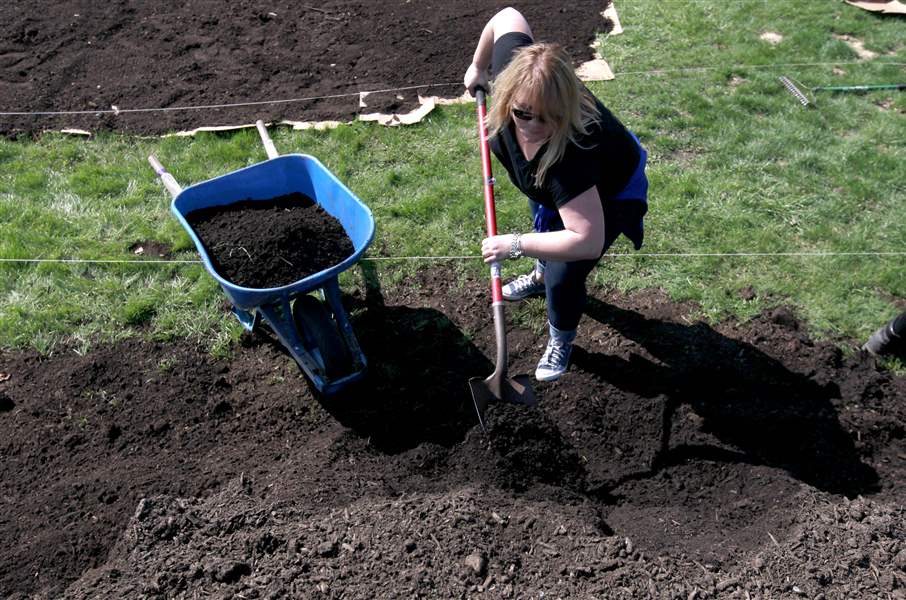
Mulch to know about life in the garden
6/19/2018
THE BLADE
Buy This Image

Amy Stone, an educator with the Ohio State Extension – Lucas County, Agriculture and Natural Resources.
As a gardener, you have likely had your hands in the mulch. You have probably spread mulch in your gardens, landscape beds, or around trees at some point in your garden’s life. Some may say the practice is one-and-done, while others do it every year. The correct timing is probably somewhere in between.
Mulching is defined as covering the soil with another layer of material. You might mulch to give the landscape a fresh and finished look, but there are so many more benefits that mulch can provide. Mulching if done properly is an awesome thing.
Mulch benefits include:
• Consistent soil temperature.
• Less compaction from foot traffic and heavy rain events.
• Conservation of moisture and reducing the need to water or irrigate.
• Limiting the amount of weed growth.
• Keeping fruits and vegetables clean from splashing soil.
• Less tracking of soil on shoes and boots.
• Allows access to the garden even when it’s wet.
• Reduction of incidents of soil borne diseases.
• Erosion control.
Over time, the organic mulches can also help improve the soil. As mulch decomposes, it can build better soil structure that will grow healthier plants that are able to tolerant and even fend off insect and disease infestations.
Usually, organic landscape mulches should not require annual replacement but rather a freshening up. If you add mulch yearly, it can stack up and become too deep and create other issues. Thick mulch layers can capture and hold water rather than allow the plants access to it. If you are in the practice of adding mulch yearly, make sure that the depth doesn’t exceed 2 to 3 inches.
Mulching around trees can also help protect them from equipment such as weed whippers and mowers. It can also lessen the competition of grass if that was allowed to grow up to and against the tree trunk. With that said, it is important to keep mulch a few inches away from all trunks. Mulch should never touch the trunk as it would provide an avenue for wildlife to hide, nibble, and even wound the plant; allow diseases to invade because of the dark and moist environment, and cause a secondary root system to form up in the mulch instead of down in the soil.
If you know me well, you know that whenever I talk about mulch and the many benefits that this practice can bring to your garden, I cannot not mention that too much of good thing can be bad – really bad! I once heard the phrase, the mis-mulching of America, referring to volcano mulching around trees. This piling of mulch up around trunks of trees can be detrimental to the health of the trees.
We must stop this horticulture crime and it can start with gardeners like you. Pulling back the mulch if it is around trees in your own landscape or neighborhood is a great place to start. Educating others about this practice is imperative — we have to get the word out that this is not good for our trees.
Recently one of my cohorts wrote an alert in our Buckeye Yard and Garden Line, or BYGL, and it can be found online at: bygl.osu.edu/node/1006. Check out this article and other timely horticultural information by visiting the BYGL website or subscribing to the free BYGL alerts where you will be notified when a new information is posted.
Happy mulching — the right way!
Amy Stone is an extension educator with the Ohio State Extension – Lucas County, Agriculture and Natural Resources. Contact her at: stone.91@osu.edu